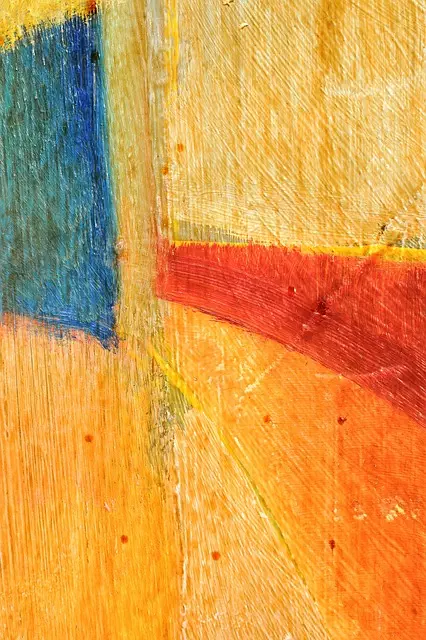Advanced acne scar treatments like laser therapy (e.g., fractional laser, CO2 lasers) and microneedling offer effective solutions to reduce scar visibility. Laser treatments stimulate collagen production with targeted light energy, while microneedling creates controlled micro-injuries, encouraging the skin's natural healing response. These modern techniques provide lasting results and a more natural approach compared to traditional treatments, boosting confidence in individuals with acne scars. Proper post-care routines are essential for optimal recovery and long-lasting improvements.
Acne scars can leave lasting marks on one’s skin and self-esteem. Understanding how these scars form is crucial in selecting effective camouflage techniques. This article delves into advanced acne scar treatment options, with a focus on laser treatments and microneedling—proven methods for reducing their appearance. We explore other rejuvenating procedures and guide readers through choosing the best approach based on skin type and concerns. Learn about post-treatment care and long-term results to achieve smoother, more even skin.
- Understanding Acne Scar Formation and Its Impact
- Advanced Acne Scar Treatment Options: An Overview
- The Role of Laser Treatments in Scar Camouflage
- Microneedling: A Detailed Look at This Popular Technique
- Other Effective Skin Rejuvenation Procedures for Acne Scars
- Choosing the Right Approach: Factors to Consider
- Post-Treatment Care and Long-Term Results
Understanding Acne Scar Formation and Its Impact
Acne scars form when inflammation and subsequent tissue damage cause a depression or elevation in the skin’s surface. This occurs as a result of the body’s attempt to heal acne lesions, which can leave behind various types of scarring, including atrophic (depressed) or hyperactive (elevated) scars. The impact of acne scars goes beyond physical appearance; they can also affect an individual’s self-esteem and confidence. Advanced acne scar treatment methods have emerged to address these concerns effectively.
Among the popular advanced acne scar treatment options are laser treatments for acne scars, which use targeted light energy to stimulate collagen production and improve skin texture. Microneedling for acne scars is another innovative approach where tiny needles create controlled micro-injuries in the skin, prompting a healing response that can help reduce scar visibility. These techniques offer hope for individuals seeking to camouflage their acne scars and regain their self-assurance.
Advanced Acne Scar Treatment Options: An Overview
Acne scars can leave lasting marks on the skin, but advancements in dermatology have introduced several effective advanced acne scar treatment options. Among these, laser treatments for acne scars and microneedling for acne scars stand out as popular choices. Laser therapies use targeted light energy to stimulate collagen production, improving skin texture and reducing the appearance of scars. This non-invasive procedure is precise and can be tailored to different skin types and scar depths.
Microneedling, on the other hand, involves pricking the skin with tiny sterilized needles to create controlled micro-injuries. This process triggers the body’s natural healing response, leading to increased collagen and elastin production. As a result, microneedling for acne scars can enhance skin smoothness and texture while improving overall skin health. Both these techniques offer significant improvements over traditional treatments, providing lasting results and a more natural approach to managing acne scars.
The Role of Laser Treatments in Scar Camouflage
Laser treatments have emerged as a game-changer in the world of advanced acne scar treatment, offering effective solutions for those seeking flawless skin. These procedures utilize concentrated light energy to stimulate collagen production and remodel the skin’s structure, resulting in improved appearance and texture of acne scars. Microneedling with lasers is one such technique gaining popularity. It involves creating tiny punctures in the skin using fine needles while simultaneously emitting laser energy. This dual action promotes cell regeneration and aids in scar camouflage.
The process begins by numbing the treatment area, ensuring patient comfort. Then, the microneedles create microscopic channels, allowing the laser to penetrate deep into the dermis. This advanced acne scar treatment can be highly effective for various scar types, including atrophic and hyperactive scars. Multiple sessions may be required, but many patients appreciate the minimal downtime and long-lasting results, achieving a smoother, more even skin tone and effectively camouflaging their acne scars.
Microneedling: A Detailed Look at This Popular Technique
Microneedling is a popular and advanced acne scar treatment that involves using tiny needles to create controlled micro-injuries in the skin. This process stimulates the production of collagen and elastin, which are key proteins responsible for skin structure and elasticity. By encouraging the skin to heal itself, microneedling helps to improve the appearance of acne scars over time. The procedure is typically performed in multiple sessions, each lasting around 30 minutes, offering a safe and non-invasive approach to enhancing skin texture and reducing the depth of scars.
As a form of mechanical stimulation, microneedling differs from laser treatments for acne scars, which use light energy to target specific skin concerns. It is particularly effective for atrophic scars, leaving behind indentations or depressions in the skin. The tiny needles create microscopic channels that prompt the body’s natural healing response, leading to a gradual remodeling of the scarred area. This innovative technique has gained popularity due to its ability to provide long-lasting results and minimize post-treatment downtime compared to other acne scar treatments.
Other Effective Skin Rejuvenation Procedures for Acne Scars
Beyond camouflage techniques, several advanced acne scar treatments offer significant improvements in skin appearance and texture. Laser treatments for acne scars, such as fractional laser therapy, use targeted light energy to stimulate collagen production, reducing both scarring and fine lines. Microneedling for acne scars involves pricking the skin with tiny needles to create controlled micro-injuries, which prompt the body to heal by generating new, healthy skin cells and enhancing product penetration.
These procedures complement camouflage techniques by addressing the underlying damage caused by acne. They provide longer-lasting results, enhancing the overall health and radiance of the skin. Consult a dermatologist to determine which combination of camouflage and advanced treatments best suits your specific needs and skin type.
Choosing the Right Approach: Factors to Consider
When selecting an acne scar camouflage technique, it’s crucial to consider your skin type and the severity of the scarring. For mild scars, microneedling can stimulate collagen production and enhance product penetration, leading to improved skin texture and a smoother appearance. This non-invasive approach is often well-tolerated and suitable for various skin tones.
For more severe cases, laser treatments for acne scars, such as fractionated laser therapy or CO2 lasers, offer precise targeting of scar tissue while minimizing healthy skin damage. These advanced acne scar treatment options can dramatically reshape scars, making them less visible. However, they may require multiple sessions and come with potential side effects like redness and swelling. Consulting a dermatologist is essential to determine the best approach based on your unique needs and goals.
Post-Treatment Care and Long-Term Results
After undergoing any acne scar treatment, including advanced procedures like laser treatments or microneedling, proper post-treatment care is essential for optimal long-term results. Patients should be provided with detailed aftercare instructions to ensure their skin’s successful healing process. This includes keeping the treated area clean and moisturized, avoiding strenuous activities that may cause excessive sweating, and protecting the skin from direct sunlight by using suitable sunscreen.
The longevity of improved skin texture and reduced scarring can vary based on individual factors such as skin type, age, and previous treatments. However, with consistent post-care routines, many patients experience long-lasting results, enhancing their skin’s overall appearance and boosting their confidence. Advanced acne scar treatments offer hope for achieving a more even and smooth complexion, providing individuals with the confidence to show off their skin.


